Perseus Rescuing Andromeda
- Material
- Oil on lapis lazuli
Stones—or rocks, as geologists refer to them—are aggregates of minerals and can usually be assigned to one of three broad types based on their natural origins. Igneous rocks solidify from hot molten material, either deep underground or at the surface through a volcano. Sedimentary rocks tend to form nice layers on the seafloor or at the earth’s surface, usually consisting of sand, mud, calcium carbonate, or salts. Any rock may be buried, heated, and deformed by crustal movements resulting in the third type—metamorphic rock. Europe’s stone industry, both ancient and modern, has often used a variety of terms for the same rocks, resulting in a rich but sometimes bewildering array of names.
We have attempted to identify the stone supports with geological accuracy while still using terms familiar to most readers. The terms marble and jasper are often used for stones that are not true marbles or true jaspers. Therefore, we have identified these inaccurate identifications by setting off the terms “marble” and “jasper” in quotation marks. For example, the familiar term red marble, actually a type of limestone, is listed here as red “marble.” Most of the stone identifications in this catalogue are based on visual inspection, often from photographs. Time and availability did not allow for chemical or physical analyses.
Reprinted from John Encarnación, appendix to Paintings on Stone: Science and the Sacred, 1530–1800, by Judith W. Mann (St. Louis: Saint Louis Art Museum; Munich: Hirmer Publishers, 2020), 314–17. Exhibition catalogue; images by John Encarnación.
 ALABASTER
ALABASTER
Composed of the mineral gypsum, the main constituent of drywall, alabaster is a rock that forms primarily in ancient oceans and lakes that have dried up, resulting in precipitation of hydrous calcium sulfate among other salts. Some alabaster may also form from hot springs. Commonly exhibiting fine, often curved layers, which record the progressive precipitation of the gypsum, alabaster may be white, or have variably colored layers of yellow, orange, brown, and black depending on the amount of iron and manganese oxides-hydroxide impurities it contains.
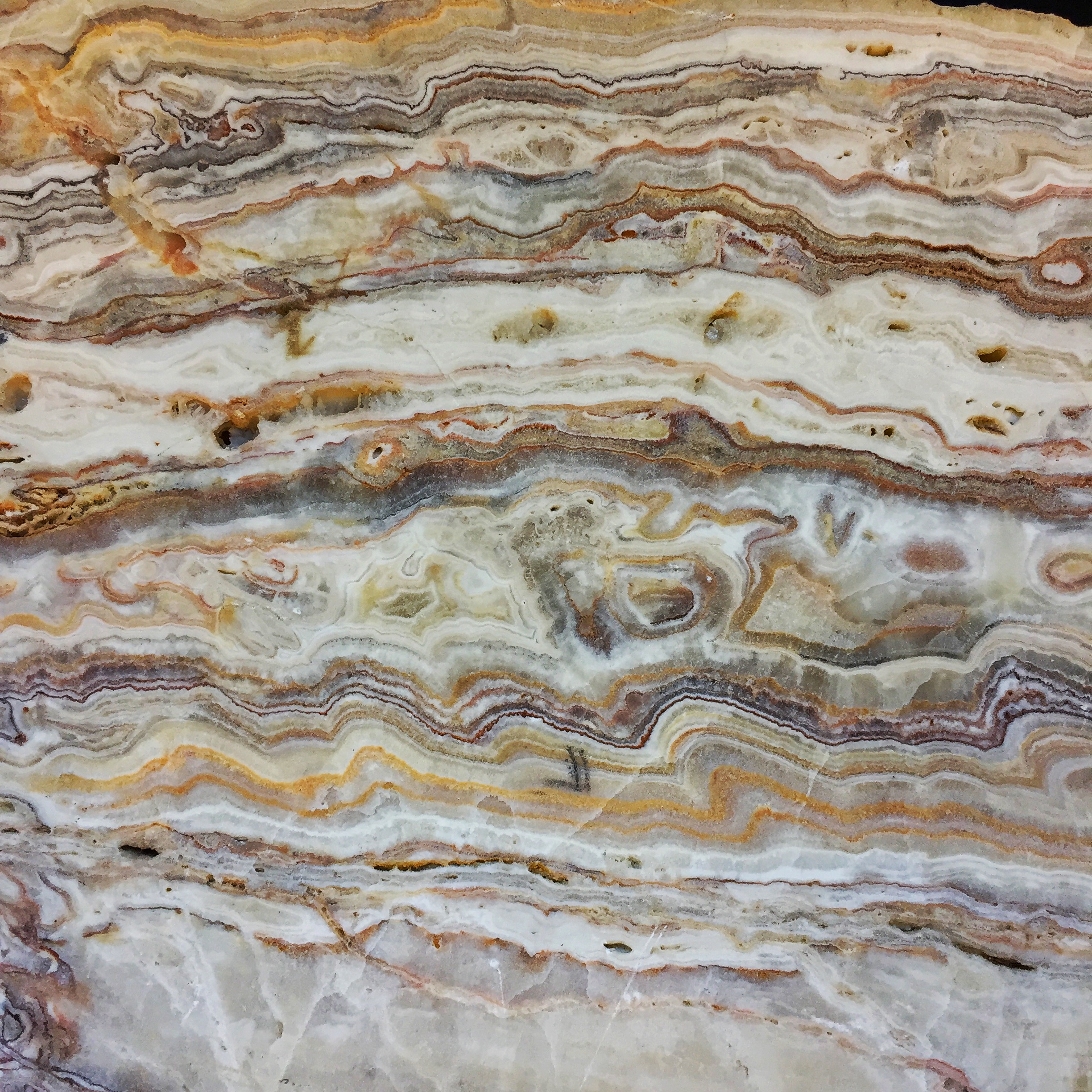 ALABASTER COTOGNINO
ALABASTER COTOGNINO
Also called “Egyptian alabaster,” “calcite alabaster,” “onyx marble,” or “oriental alabaster” in the stone trade, this rock is not true alabaster in the geologic sense because it is not made of the mineral gypsum, a calcium sulfate. Instead, it is made of the mineral calcite, a form of calcium carbonate. Texturally, however, it looks very similar to alabaster because it forms in a similar way—by precipitation of fine layers primarily from springs or in caves, also similarly colored by iron impurities. The resulting rock is called travertine by geologists—the same material that makes stalactites and stalagmites in caves. Whereas true alabaster can be scratched by a fingernail, travertine cannot.
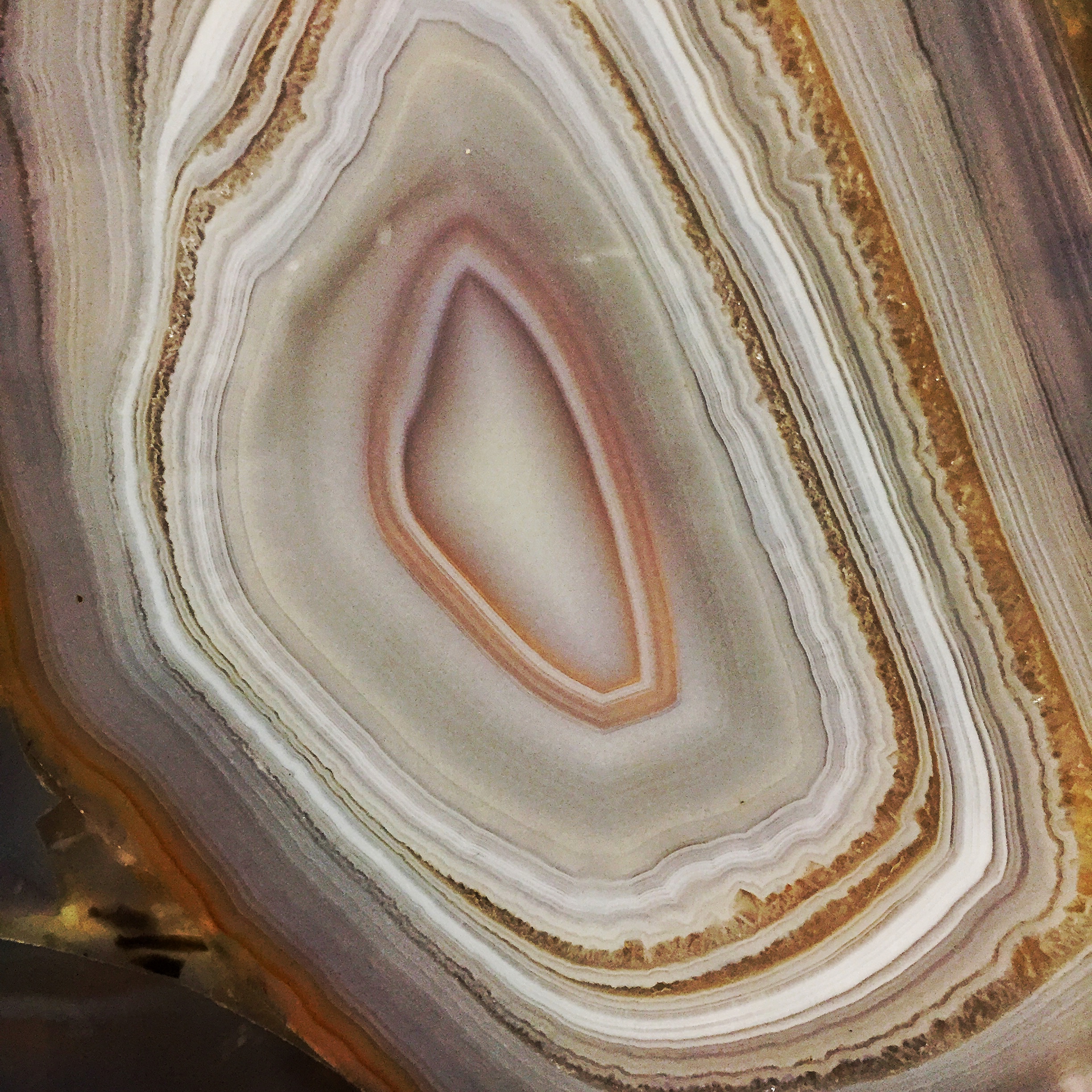 AGATE
AGATE
Known for its fine repetitive banding, agate is a tough rock composed primarily of silica minerals, dominated by quartz. The vast majority of agates crystallize from warm groundwaters that fill cavities in volcanic rock. Fine laminae line the walls of the cavity, growing concentrically inward. Partially filled cavities end up as geodes, while completely filled cavities may be called nodules. The often multicolored laminae in agates are frequently caused by natural iron and manganese impurities, although artificially colored agates are not uncommon. Agates may get fractured and subsequently healed, with quartz fillings producing veins that cut across the fine layers.
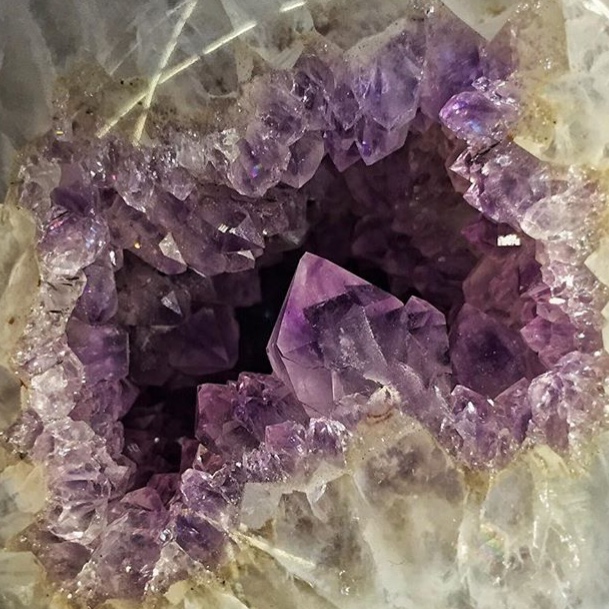 AMETHYST
AMETHYST
The variety of quartz that is purple, amethyst owes its distinctive color to small amounts of iron dispersed in the quartz. However, iron impurities alone will not make amethyst; iron with a charge of +3 will make the quartz yellow. But if the iron is irradiated with gamma rays produced by the decay of radioactive elements naturally found in the rocks, it may achieve a charge of +4, which then imparts the purple color. Amethyst crystals usually form in voids in volcanic rock and are commonly associated with geodes, agate, and quartz veins. As such, amethyst crystals often occur in layers of variable crystal size.
 DENDRITIC STONE
DENDRITIC STONE
Often confused for fossils, manganese oxide dendrites form on rock surfaces as manganese-saturated groundwaters crystallize manganese oxides in a tree-like pattern, like the patterns that salt crystals make as salty winter slush evaporates on a driveway. These black or dark gray manganese dendrites are not uncommon on rock surfaces, but they are most visible on the smooth surfaces of homogenous light- colored rocks like some limestones.
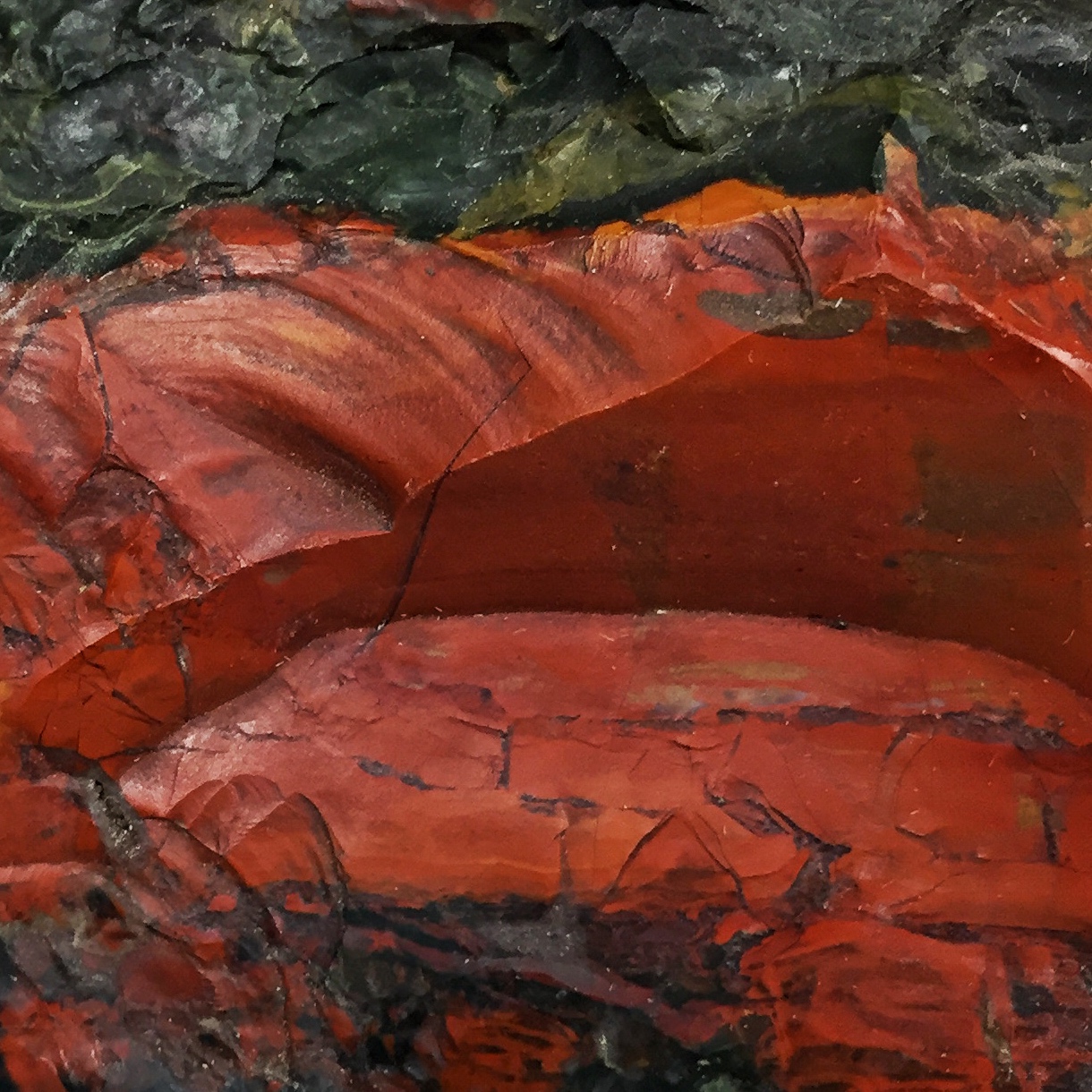 JASPER
JASPER
A tough rock composed of very fine-grained, microscopic quartz crystals with variable amounts of iron oxides and hydroxides is called jasper. Depending on the amounts and types of iron oxides/hydroxides and other impurities, jasper can have hues of yellow, orange, brown, red, green, and black, with red being the most common. Most jasper originates as sedimentary rock on the ocean floor, formed from the remains of tiny marine creatures that make their shells from silica. Jasper may be fractured by earth’s crustal movements to varying degrees, with veins of white quartz filling the fractures or spaces between the broken fragments.
 ARNO-LINED “JASPER”
ARNO-LINED “JASPER”
Often identified by the Italian term lineato d’Arno, this is actually a type of limestone. Originally formed on the ocean floor, and a relative of pietra paesina, this rock seems to be uniquely found in the Apennine mountains of Italy. Unlike more common limestones, a somewhat unusual geologic history has formed its interesting patterns: after it turned to stone from a limey mud, it was fractured and calcite veins filled those fractures, producing nice straight lines in the rock. Then, groundwaters carrying iron and manganese saturated parts of the rock, leaving “high water mark” stains in it.
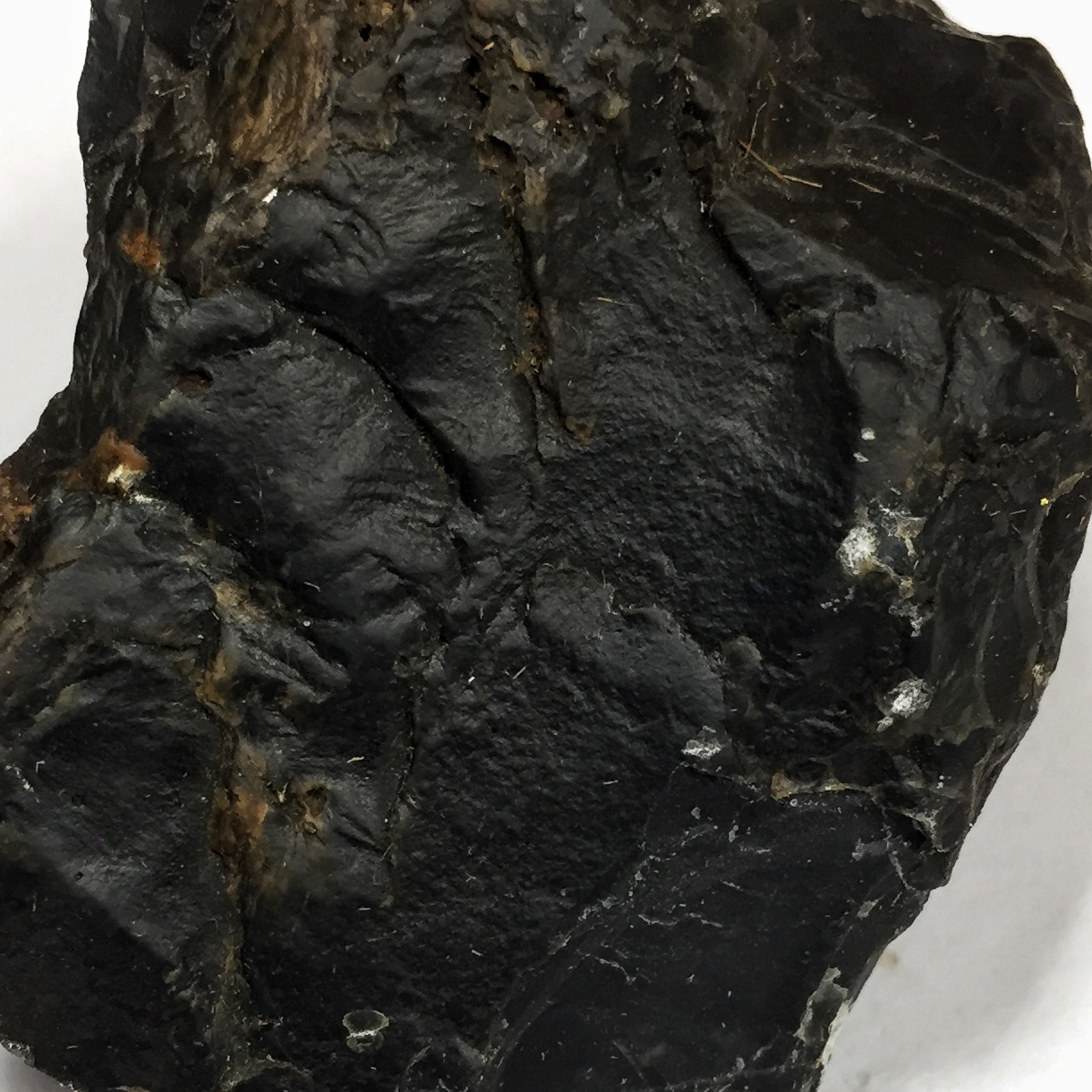 BLACK JASPER
BLACK JASPER
Whereas the more typical jasper is colored red by tiny inclusions of hematite, a red variety of iron oxide, black jasper owes its dark color to tiny inclusions of dispersed magnetite, a black iron oxide. Dark varieties of jasper are sometimes referred to as flint.
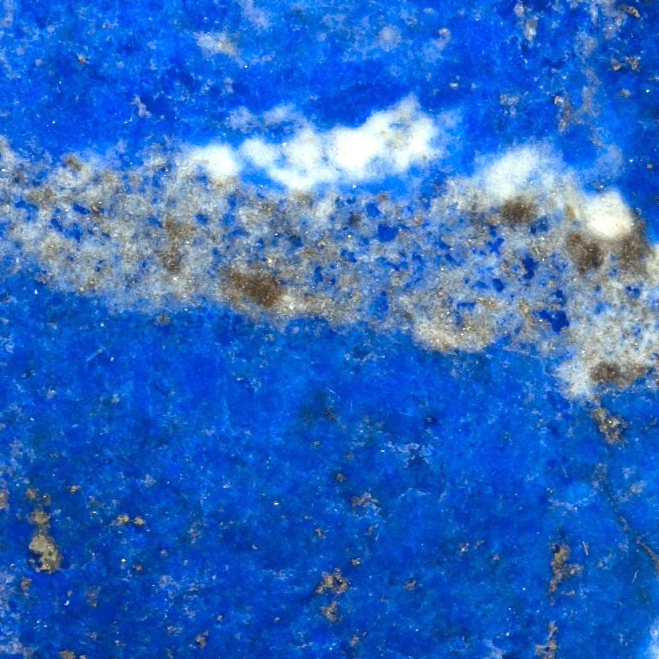 LAPIS LAZULI
LAPIS LAZULI
Also called simply lapis, this somewhat rare and beautiful rock owes its blue color to the mineral lazurite, which in turn owes its color to the element sulfur. When sulfur is locked in the crystal lattice of lazurite, it causes a blue color, in contrast to the bright yellow of a pure sulfur crystal. Lapis also commonly has a sprinkling of yellow- gold pyrite and streaks or patches of white calcite. Lapis lazuli is a metamorphic rock, most famously quarried in Afghanistan, where limestones, which provided the calcite, were intruded by magma, which provided the other ingredients and the heat to produce this unusual rock.
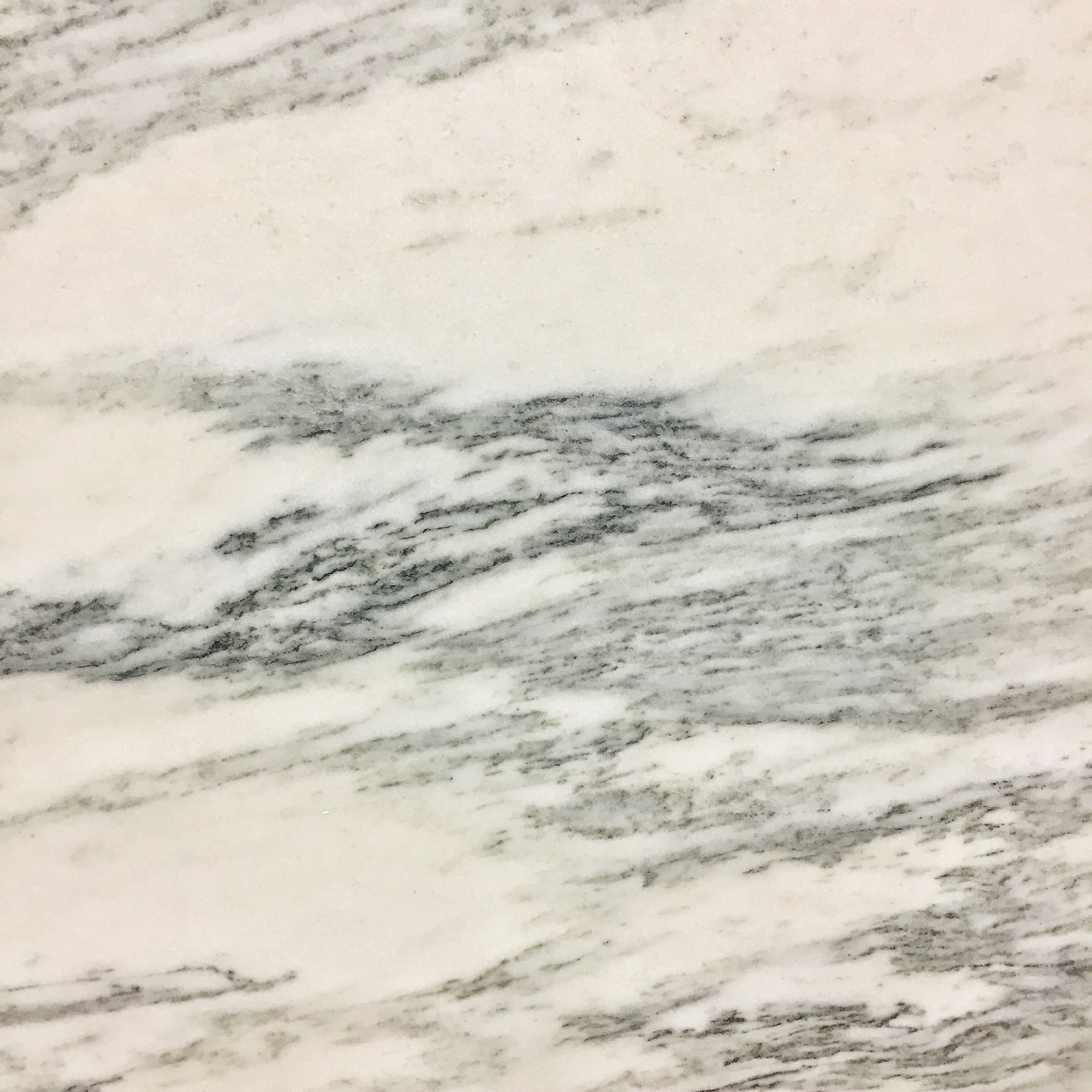 MARBLE
MARBLE
When limestone—a common sedimentary rock made of the mineral calcite—is buried in the crust and heated, it turns into the metamorphic rock called marble. The calcite crystals tend to get larger and more tightly interlocked, making marble a somewhat tougher rock than limestone. Pure calcite marble is brilliant white; impurities often appear as dark-colored streaks and swirls reflecting the tectonic contortions the rock went through. Subsequent fracturing and weathering may add veins and rusty stains. Sometimes it is challenging to tell if a limestone has been heated enough to be converted into marble, and so some limestones are mistakenly called marble.
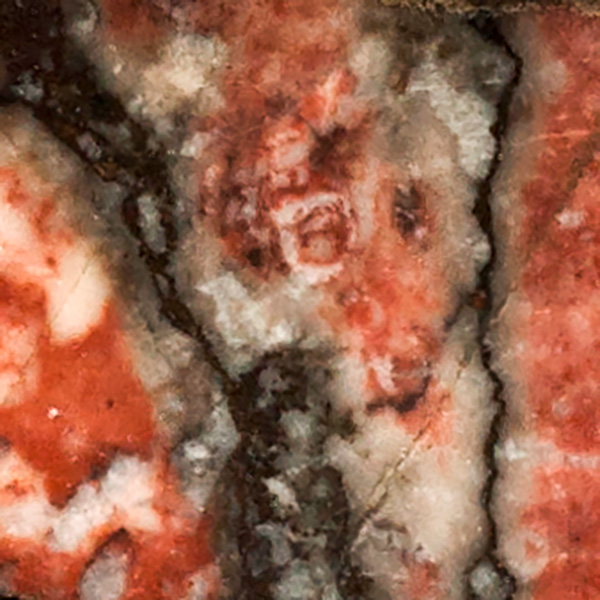 AFRICAN “MARBLE”
AFRICAN “MARBLE”
The sample of African “marble” in this exhibition is limestone that has been fractured into angular pieces and then naturally cemented together again by calcite. The resulting rock is called a breccia—a rock consisting of angular fragments cemented together. The various colors are due to various amounts and types of impurities in the limestone.
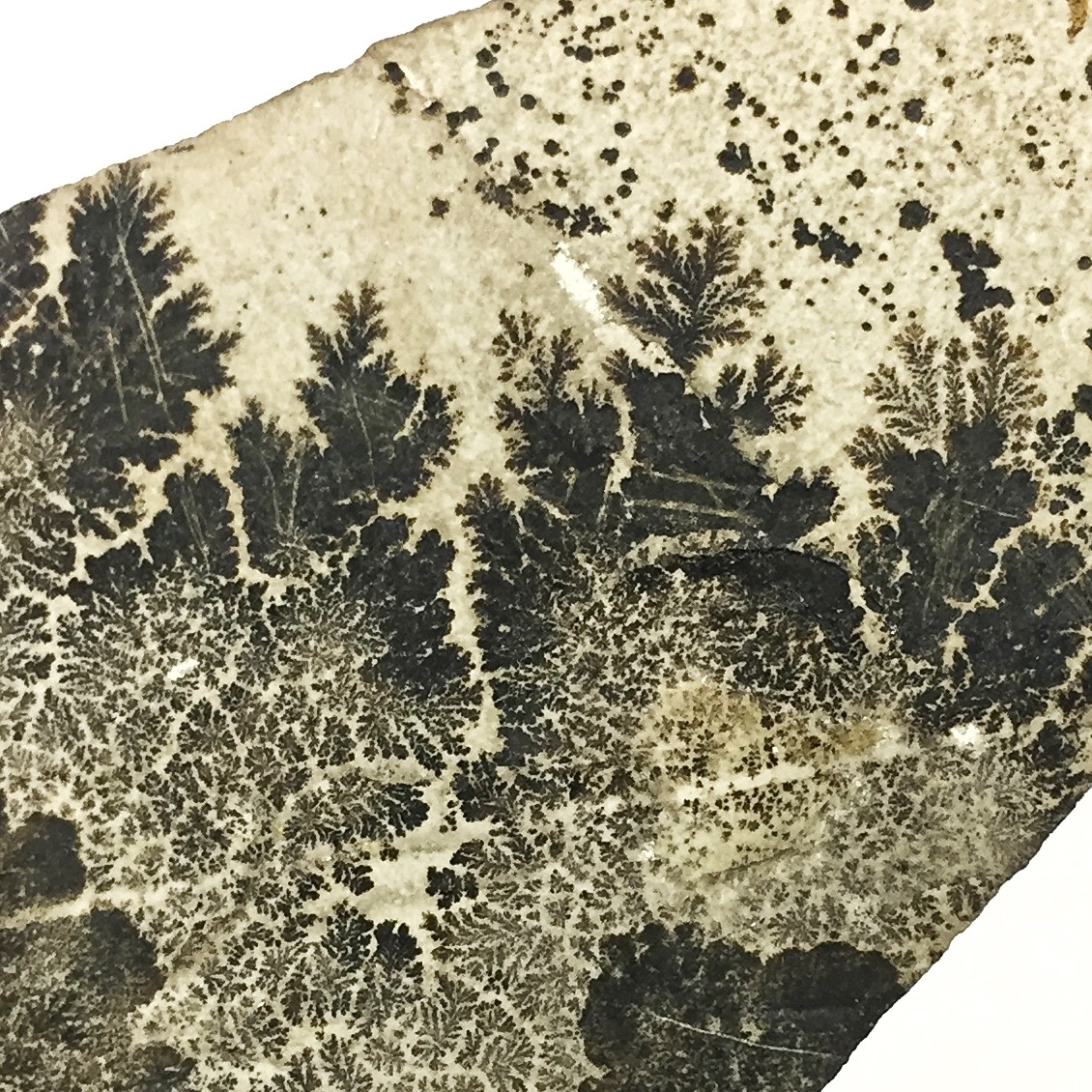 DENDRITIC MARBLE
DENDRITIC MARBLE
Dendritic marble is simply a type of dendritic stone—a rock with manganese oxide dendrites on the surface.
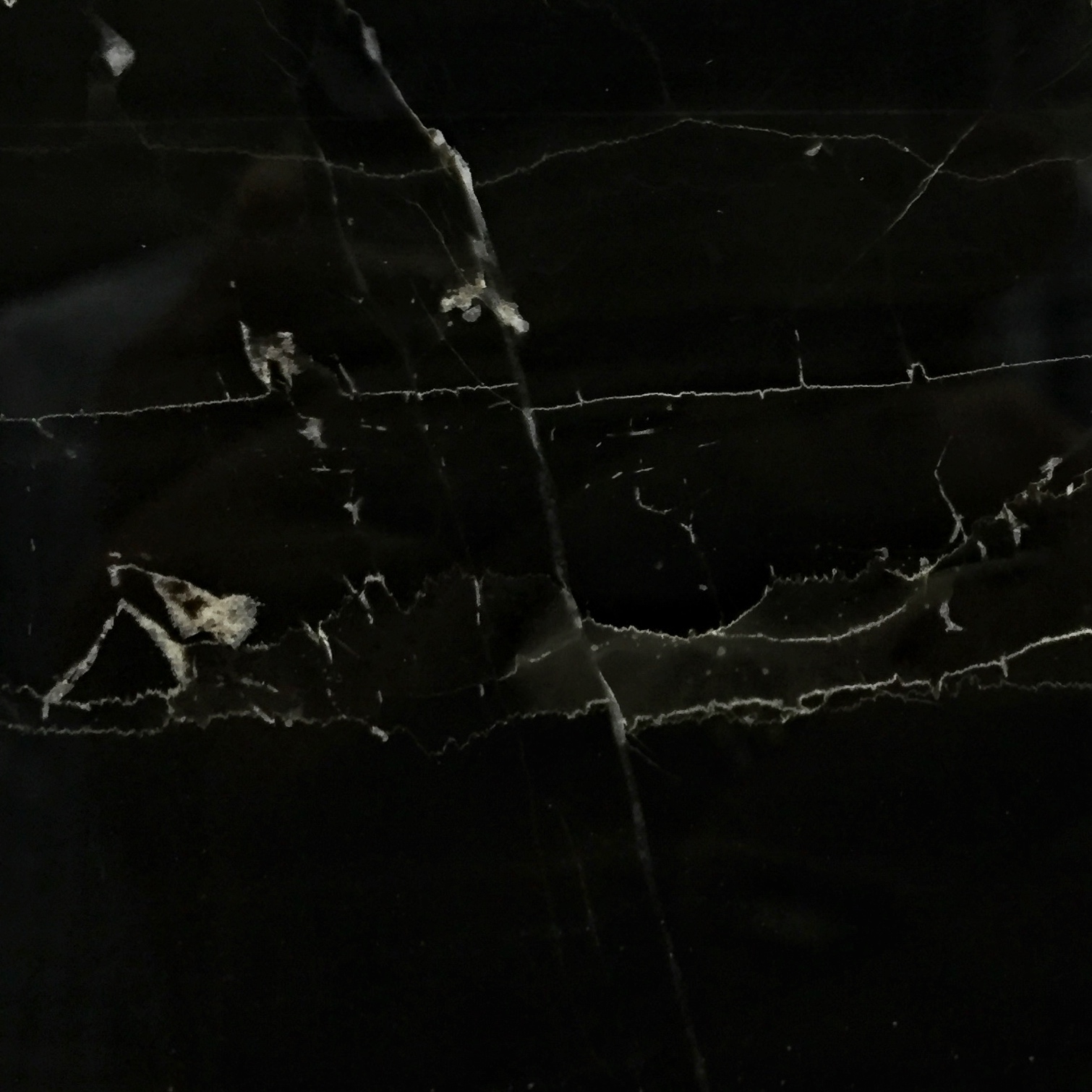 BELGIAN “MARBLE”
BELGIAN “MARBLE”
This rock is known for its deep black color and its excellent shine when polished. A rock, or anything for that matter, will appear black, even under illumination, if the material contains some substance that will absorb all the colors of the incident light. Carbon-bearing organic matter is great at absorbing light. Just like very dark, organic- rich soil, Belgian “marble” is limestone that contains abundant organic matter compared with other limestones. Some samples of Belgian “marble” may have veins of white calcite, which filled fractures and lacked the organic matter that darkened the host rock.
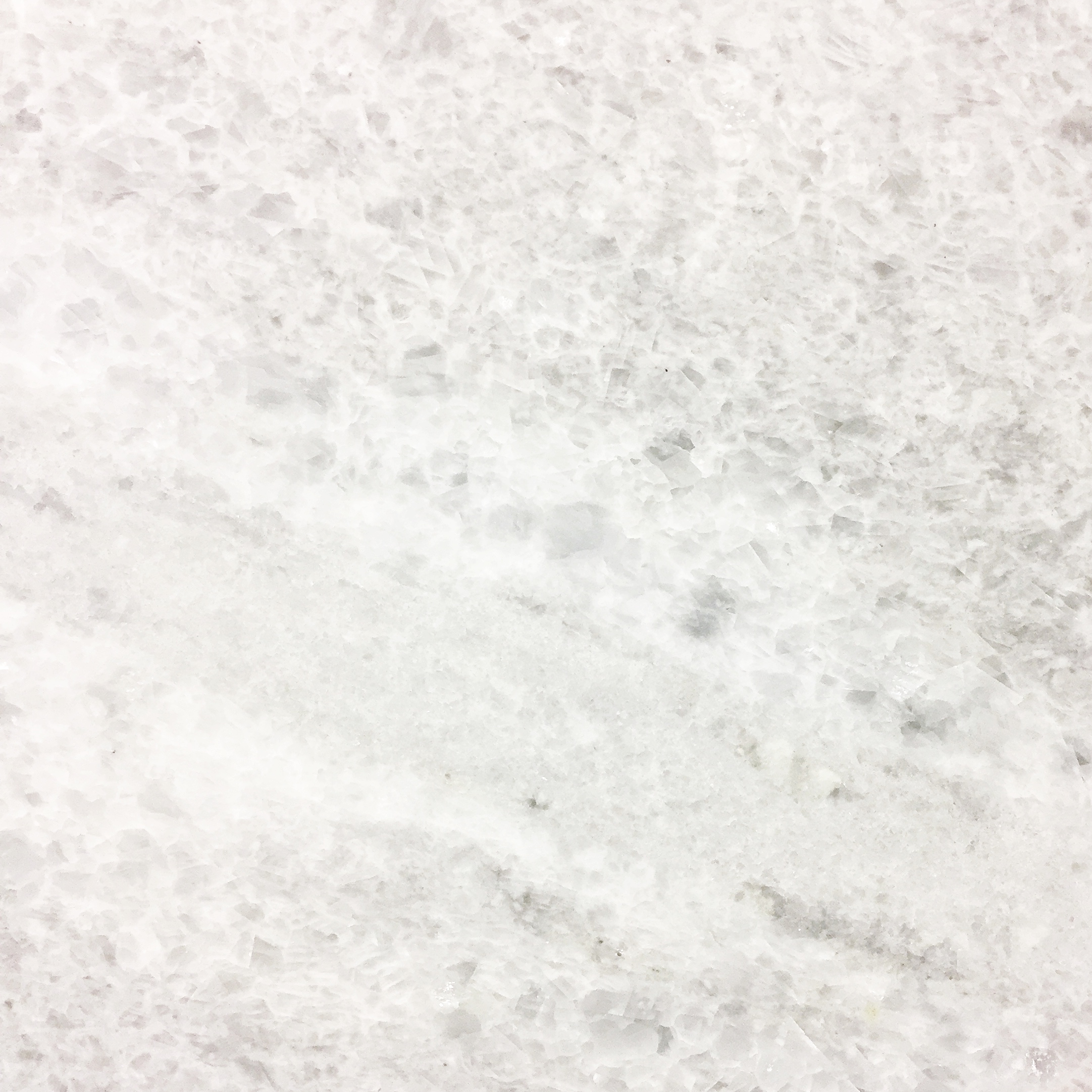 WHITE MARBLE
WHITE MARBLE
The main mineral in marble is calcite, which is colorless and transparent. But many tiny fluid inclusions and fractures may scatter light making marble white, just as milk is made white by the scattering of light by numerous tiny fat globules. It is somewhat unusual to have a pure calcite marble because the original rock, limestone, which forms on the ocean floor, needs to be free of any mud, sand, and other debris that would later add color. That’s why relatively pure white marble is highly prized.
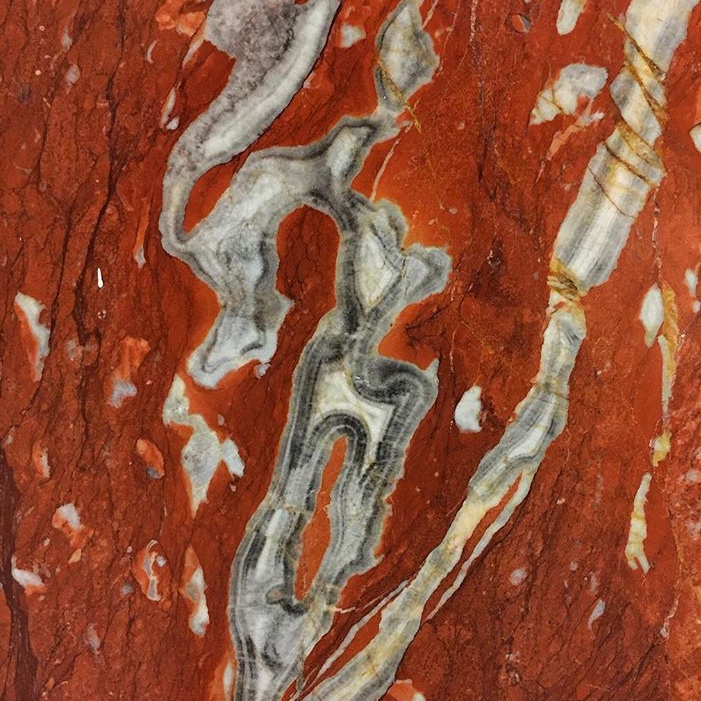 RED “MARBLE”
RED “MARBLE”
Like many other samples of “marble,” red “marble” is often really limestone—a sedimentary rock that has not been subjected to the higher temperatures required to make true marble. The red color is due to the most common cause of reddish colors in rock, the mineral hematite, a type of iron oxide. Some samples of red “marble” may have veins of white calcite that filled former fractures; others may be heavily fractured, even multiple times, into angular pieces, producing the rock called breccia.
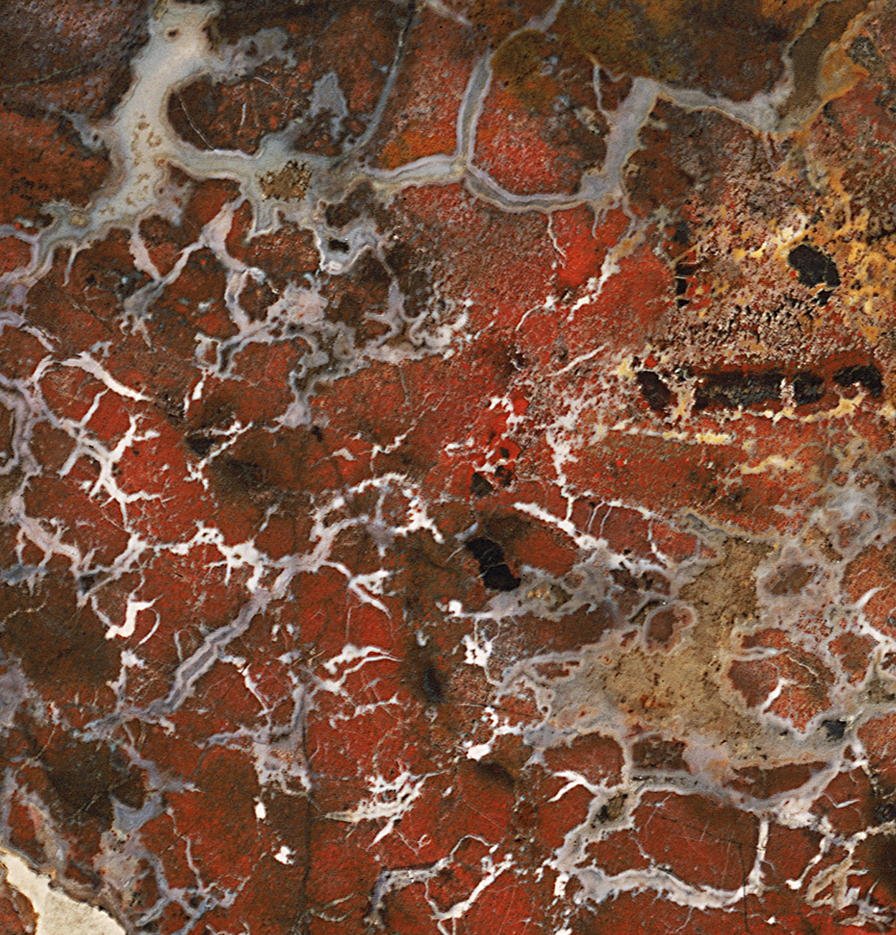 VERONA “MARBLE”
VERONA “MARBLE”
Verona “marble” refers to limestones derived from the Verona area of Italy. The deep red colors are due to the mineral hematite. The rock was fragmented and individual pieces coated and cemented by white calcite. Some samples of red Verona “marble” have been weathered and the red hematite converted to more yellowish iron hydroxide.
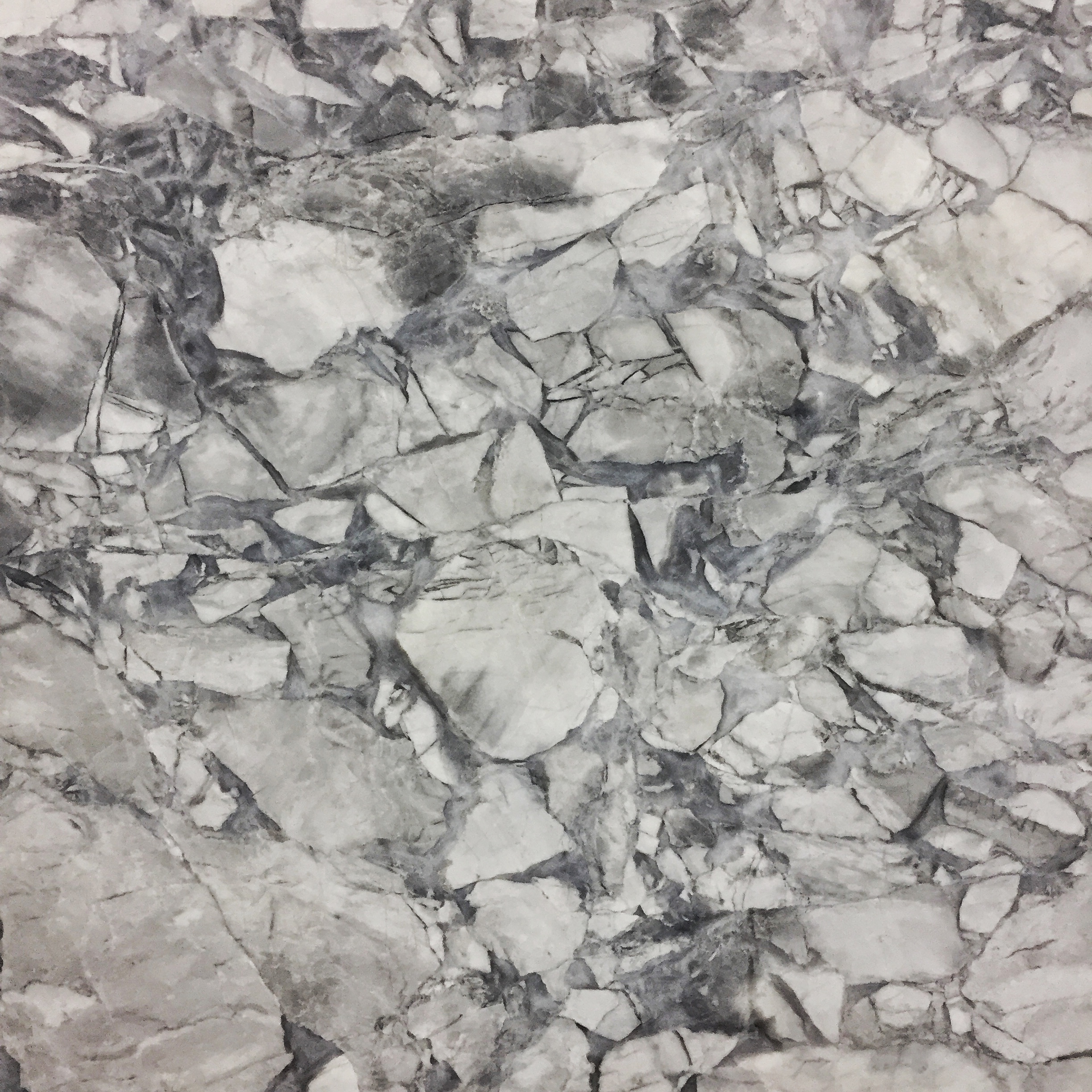 BRECCIATED MARBLE
BRECCIATED MARBLE
A breccia is any rock that consists of angular fragments cemented together by minerals. Breccias can form in many ways—by fault movements, landslides, cave collapses, volcanic eruptions, and even meteorite impacts. Marble and limestone breccias are most commonly formed by faults and cave collapse. The fragments may be colored red by hematite, yellow by iron hydroxides, or white if no contaminants are in the calcite.
 OBSIDIAN
OBSIDIAN
Born from volcanoes, obsidian forms from magmas rich in silica that did not have time to crystallize well. It is mainly volcanic glass. The black color is often due to numerous dispersed microscopic crystals of black magnetite. Obsidian may have white or gray streaks, which are often bands of microscopic crystals or bubbles that become aligned as the viscous lava comes out of the earth like toothpaste. Streaks of red in mahogany obsidian are due to oxidized bands rich in hematite. White “snowflakes” or dots, present in some obsidian samples, are aggregates of crystals—mostly varieties of silica and feldspar—that formed in the unstable glass after eruption to the earth’s surface.
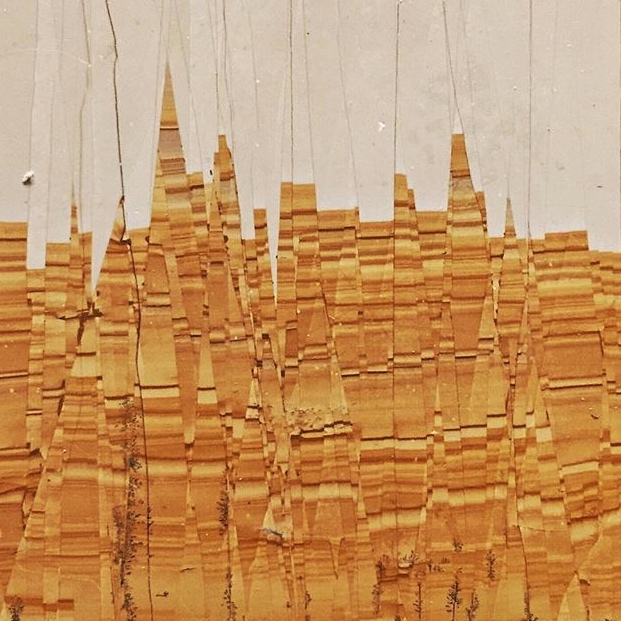 PIETRA PAESINA
PIETRA PAESINA
The intriguing landscape-like patterns in pietra paesina, also called landscape stone, tell a fascinating geologic story. The rock originated on the ocean floor as a muddy limestone. After it turned into rock, multiple fractures cut the limestone and were filled with thin impermeable calcite veins. These make the straight, often crisscrossing lines on the stone. Then, iron- and manganese-bearing groundwaters penetrated the rock to varying levels between the impermeable veins, leaving variable high-water stains in the rock. The curved or wavy iron and manganese stains are called Liesegang bands.
 PORPHYRY
PORPHYRY
The name porphyry derives from the Greek word meaning “purple.” Porphyry rocks quarried in ancient Egypt were volcanic rocks with larger crystals in a finer-grained purplish red matrix, from which the name is derived. Geologists now use the name for any magmatic rock with larger crystals in a finer-grained matrix. The larger crystals in volcanic porphyries form during slower cooling while the magma is underground. Then, as the magma is erupted, the still-liquid part cools quickly, forming the finer- grained matrix. The purplish red color of some porphyries is due to hematite in the fine-grained matrix. Greenish porphyries contain the minerals epidote and chlorite, which form when the rocks are naturally altered by hydrothermal waters.
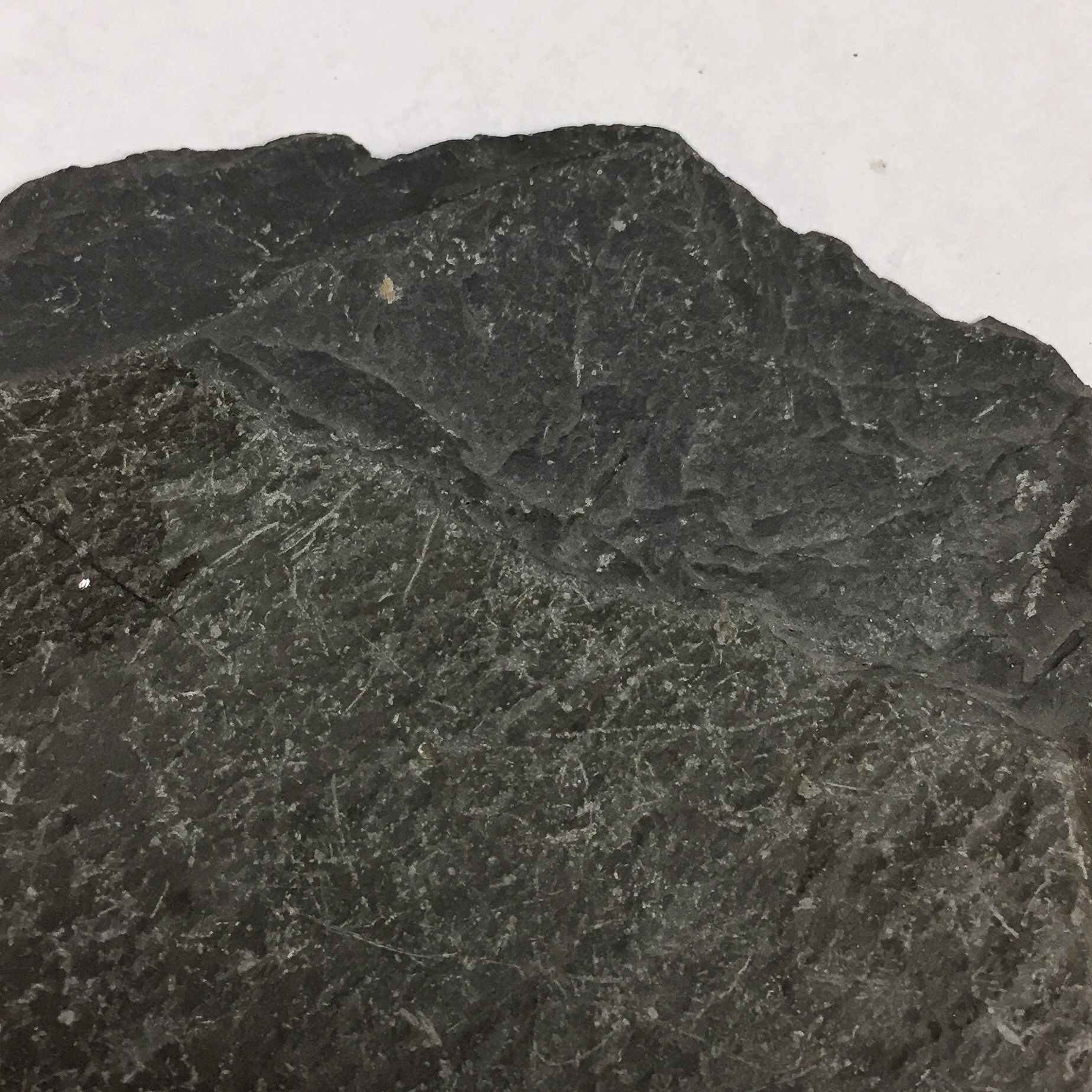 SLATE
SLATE
Slate forms when sedimentary rock containing much clay is compressed under tectonic pressures, converting
the random clay particles in the mudstone into aligned, flattened flakes of tiny mica which give slate its planar metamorphic fabric. This allows slate to be split into very smooth, thin sheets, ideal for a chalkboard, roofing material, or as a surface for painting. The dark gray to black color of most slate is due to carbon-rich material derived from organic matter in the original mudstone. Greenish slates get their color from the mineral chlorite.
 QUARTZ
QUARTZ
In its pure form, the mineral quartz, which is composed of silicon dioxide, is clear and colorless. With various impurities and defects in the crystals, quartz can take on a variety of colors with names like amethyst (purple), citrine (yellow), smoky quartz (brown), and rose quartz (pink). One of the most common varieties of quartz is milky quartz, which is white. The milky white color is due to numerous microscopic, fluid-filled fractures that scatter light, the way tiny fat globules make milk white.
Bringing together more than 70 examples by 58 artists, Paintings on Stone represents major centers of stone painting and features 34 different stones.